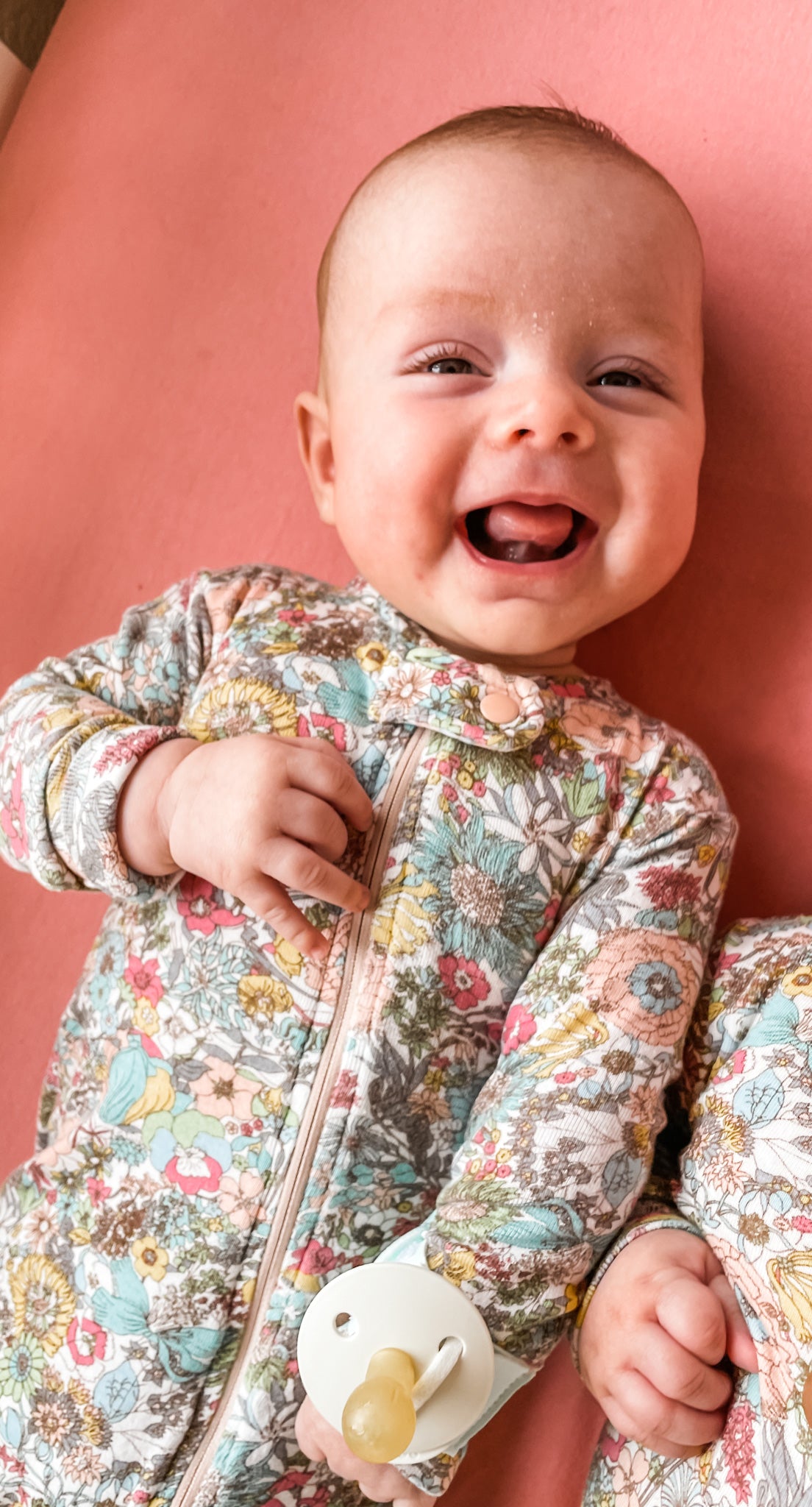
When should you introduce a pacifier?
No matter whether you choose to start using a pacifier right away or wait, you need a pacifier wristband to make your infant pacifier journey positive!
Becoming a parent can be an overwhelming journey. You want to do the best for your baby, but sometimes there can be so many online resources that you don’t know where to start or who to trust!
So what’s the answer to the question, when should you introduce a pacifier?
There’s no wrong answer! You can start on day 1, week 6 or month 3. You know your baby best no matter when you choose to introduce a pacifier, it will be great!
Let’s dive a bit deeper though with some pros and cons to help you make your decision.
Should you start day 1?
Sure, but you may want to delay it, here’s why:
Using a pacifier can be controversial among the breastfeeding community. Some say that a newborn pacifier will cause nipple confusion making breastfeeding more difficult. Others say that if your baby uses their pacifier too much too early it can hide hunger cues and cause your milk supply to drop too early.
Nonnutritive sucking is innate for newborns and when they suckle at the breast it helps the mother’s breast milk supply. If they are using a pacifier instead of suckling at the breast it might affect the mother’s supply. data-mce-fragment="1">However, don’t let this information deter you from immediately introducing a pacifier! Like I mentioned above, pacifiers have a surplus of advantages! In my personal experience, our son learned how to breastfeed better because using a pacifier helped him to practice the sucking motion needed for feeding.
Should you delay introducing a pacifier?
Sure, but your baby may not take to a pacifier if it isn’t introduced right away. They may end up using your breast for their nonnutritive sucking which can be an exhausting experience!
Here’s a couple tips if your baby won’t take a pacifier:
- Dip the pacifier in breast milk or formula: Your baby might not understand the sucking action of a pacifier. If milk is on the tip of the pacifier they might be able to mimic the sucking action of a nipple or bottle.
- Introduce it after a feeding: If your baby is already angry and crying, offering a pacifier they don’t want isn’t the best time to start trying. Your baby is most relaxed after a feeding so they may be more likely to take it when they are “milk drunk.”
- Inspect the nipple: If your baby used to take a pacifier, but is now refusing there might be a hole in the nipple which is preventing your baby from sucking properly.
A compromise?
There doesn’t always have to be an either/or. You can introduce a pacifier right away, but only use it during nap and bedtime
No matter whether you choose to start using a pacifier right away or wait, you need a pacifier wristband to make your infant pacifier journey positive! This pacifier bracelet has buttery soft material and velcros around baby’s wrist. The best part is that by around 4 months they can find the infant pacifier all on their own using the pacifier wristband!
Babies cannot usually do that until about 8 months! The Ingy Bingy Band will help save your sanity so that you’re not constantly looking for the pacifier when it falls out!

